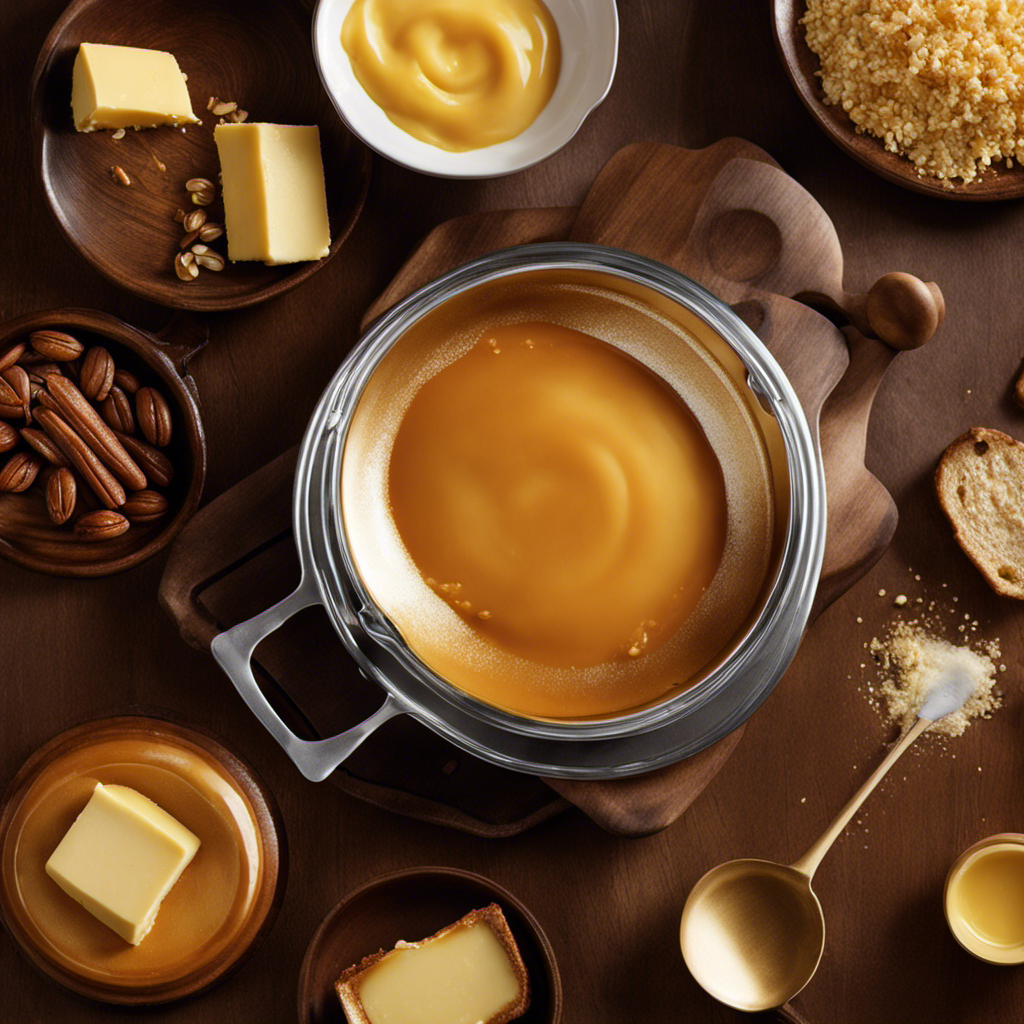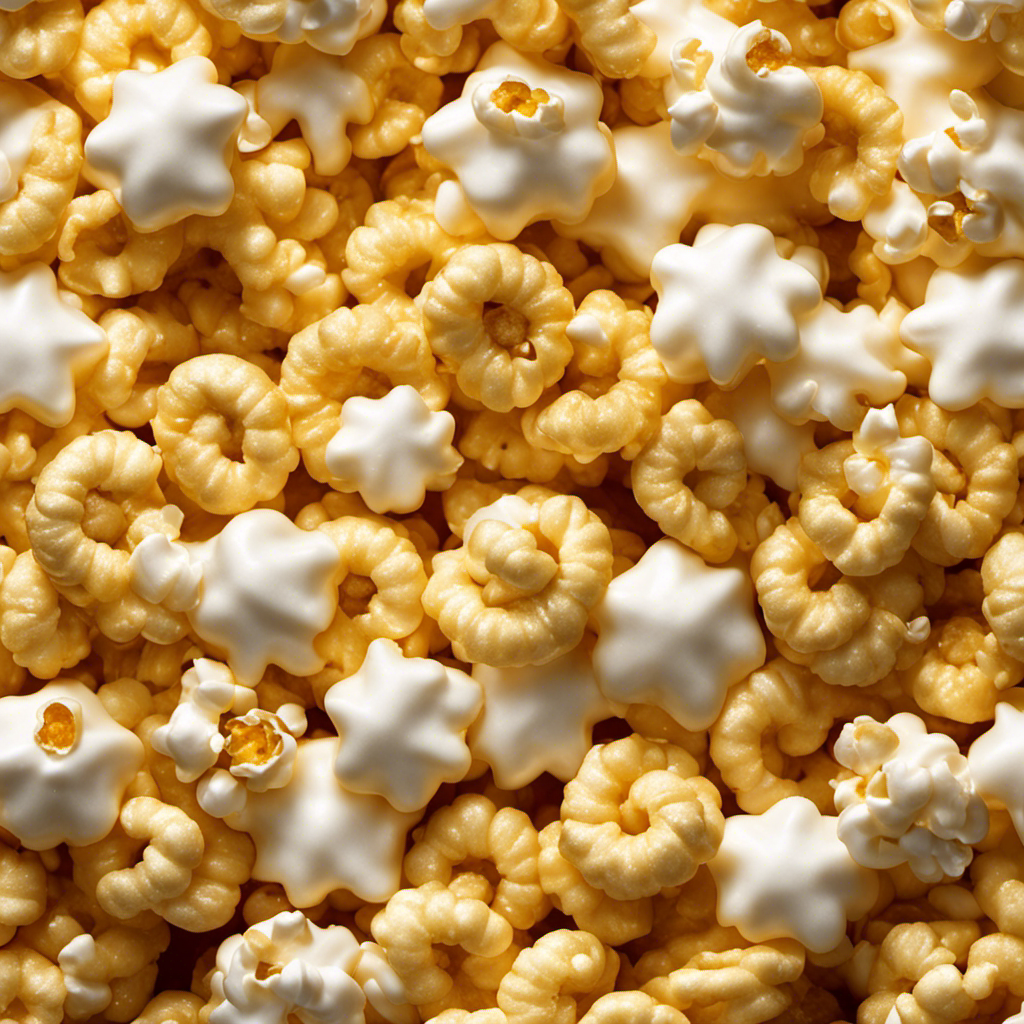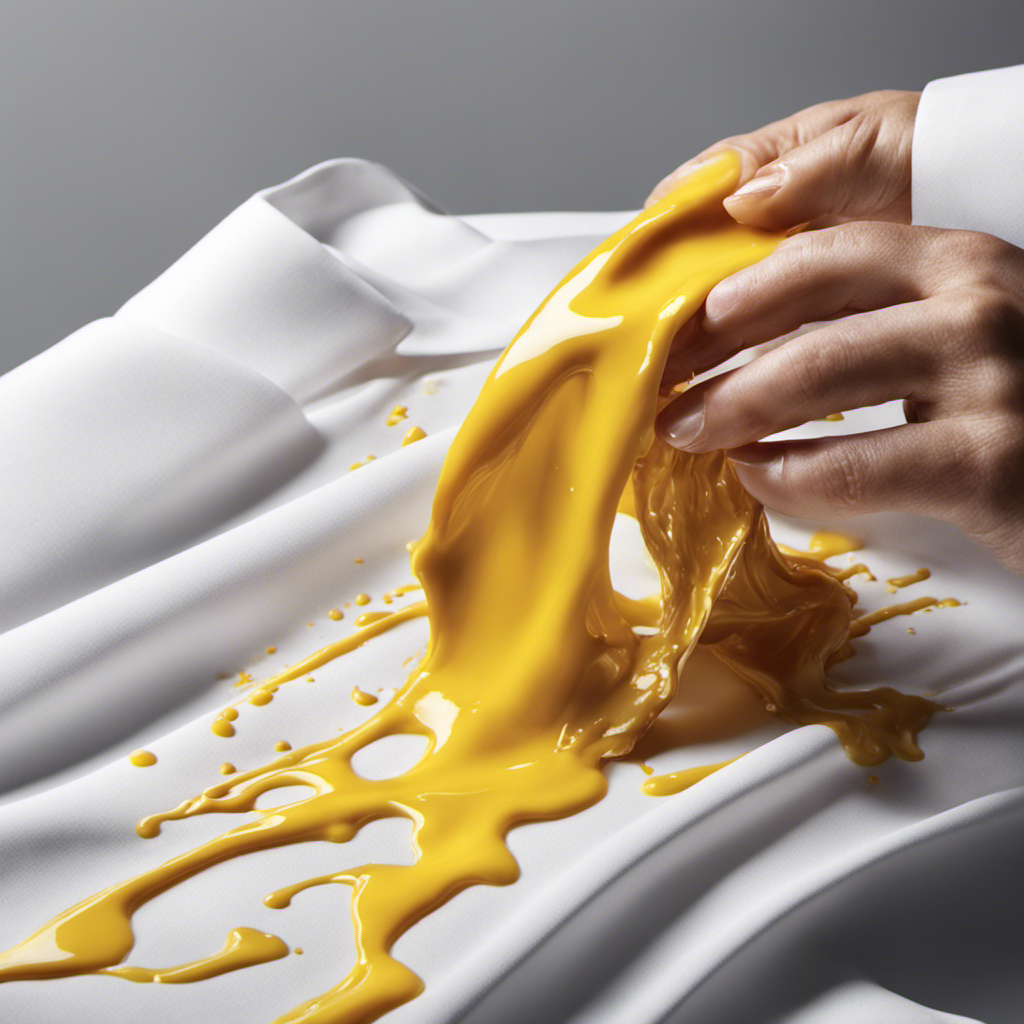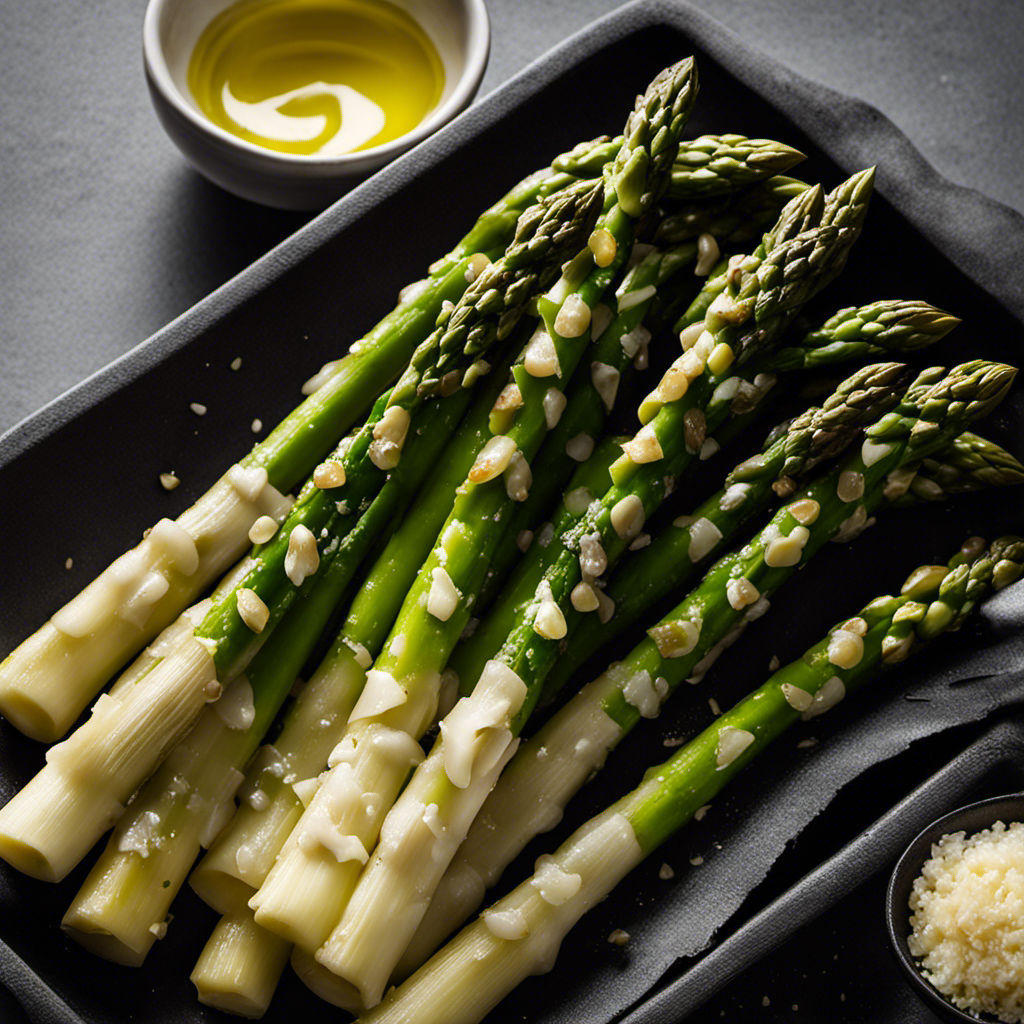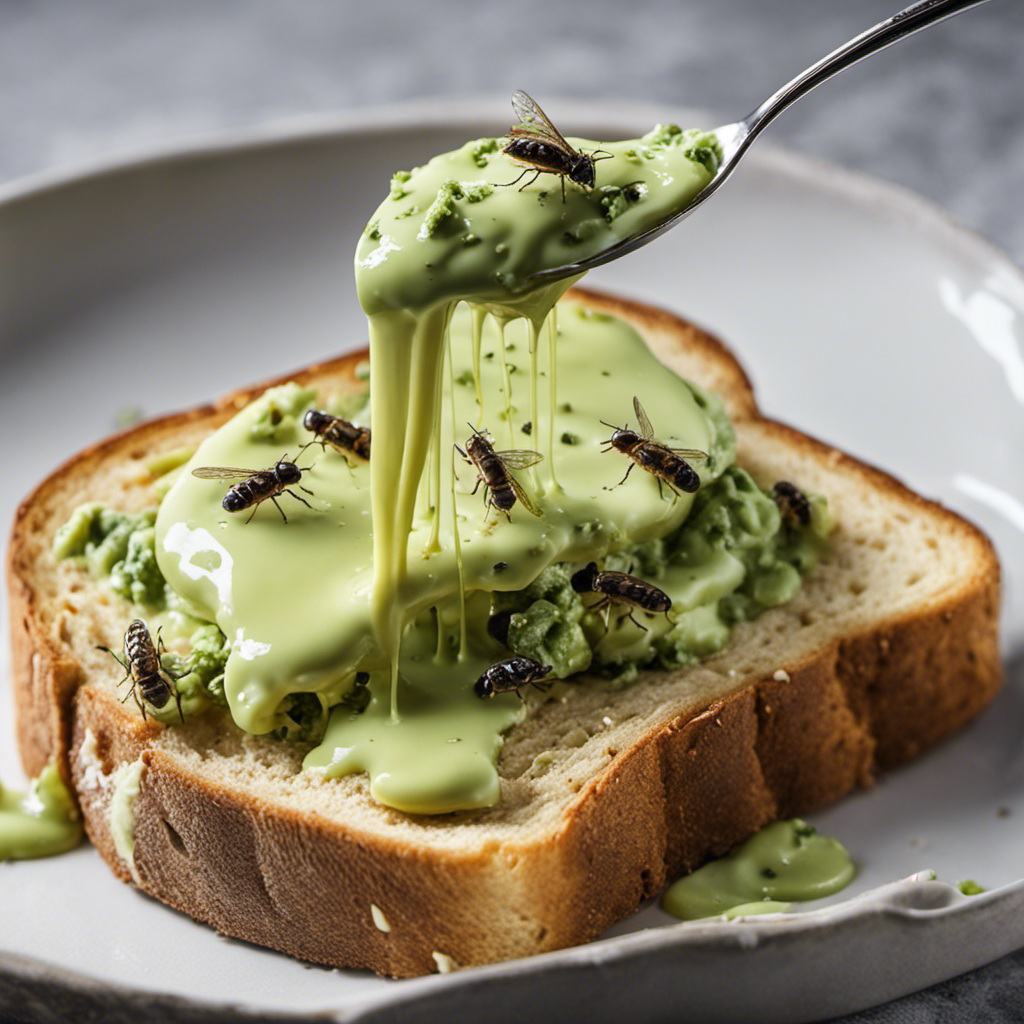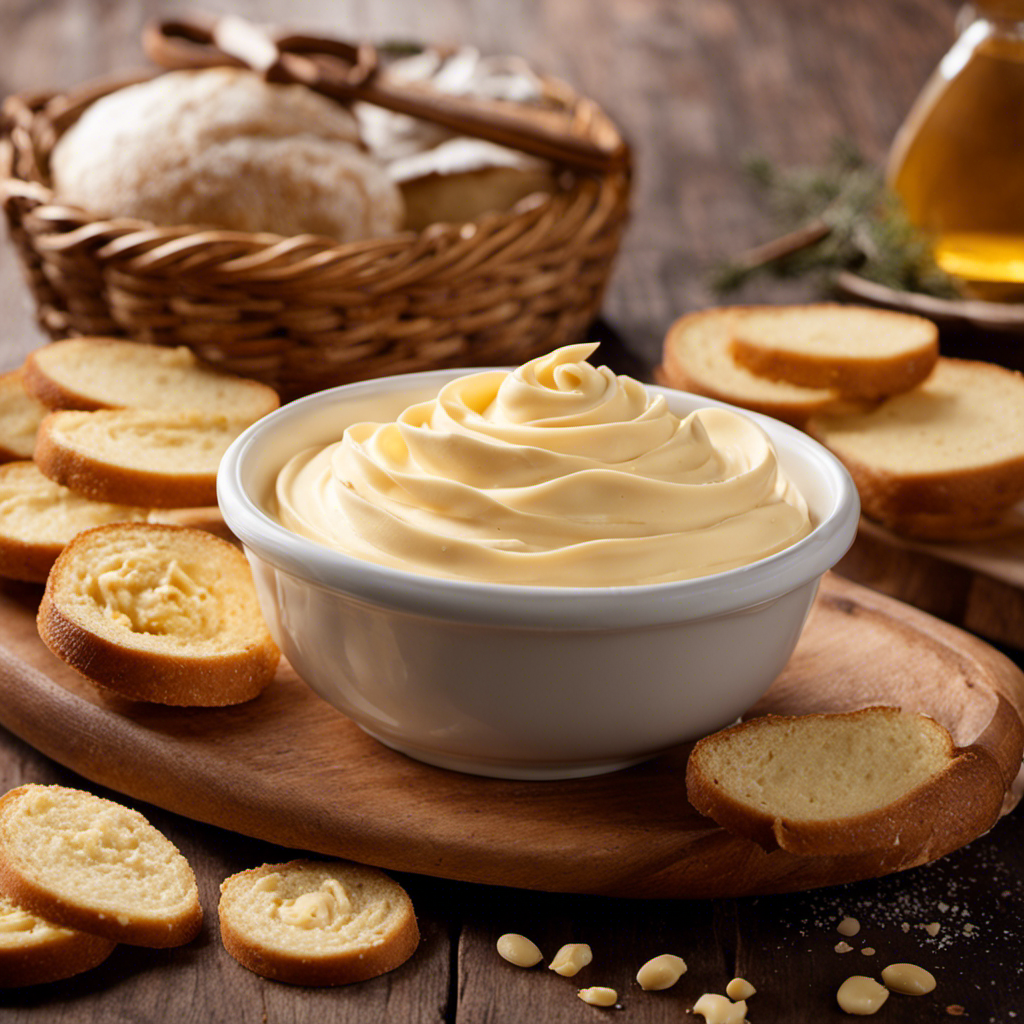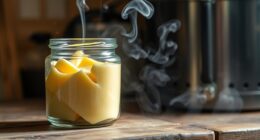I have always been intrigued by the precise moment when butter achieves the perfect level of browning. Thankfully, through research and experimenting on my own, I have finally discovered it.
In this article, I’ll share with you my foolproof methods for recognizing that perfect moment when butter transforms into a rich, nutty delight. From the color transformation to the changes in texture and aromatic notes, I’ll guide you through the process step by step.
Get ready to elevate your cooking skills and impress your taste buds.
Key Takeaways
- Butter undergoes a noticeable color transformation when browned, turning from pale yellow to a rich golden-brown hue.
- The Maillard reaction is responsible for the color and flavor development in browned butter, resulting in a nutty and caramelized taste.
- The texture of butter changes as it cooks, becoming thicker and more viscous due to the evaporation of water content.
- The aroma of browned butter enhances the overall flavor of a dish, and key indicators of the browned butter stage include a deep golden color, fragrant and nutty smell, rich and slightly caramelized flavor, and smooth and silky texture.
The Color Transformation
When butter is browned, it undergoes a noticeable color transformation. The pale yellow butter turns into a rich golden-brown hue, creating an inviting visual appeal.
This color change is a result of the Maillard reaction, a chemical reaction that occurs when proteins and sugars in the butter are heated. The Maillard reaction not only impacts the color but also contributes to flavor development. Browned butter has a nutty and caramelized taste, enhancing the overall taste profile of dishes.
Due to its unique flavor, browned butter is often used in various cooking applications, such as baking, sautéing, and making sauces. Its distinct taste adds depth and complexity to dishes like cookies, pasta, and vegetables.
As the color of the butter changes, it sets the stage for the subsequent texture changes that occur.
Texture Changes
As it cooks, the texture of the butter changes. Initially, the butter is smooth and creamy, but as it continues to cook, it undergoes a transformation. The water content in the butter evaporates, leaving behind pure butterfat. This causes the texture to become thicker and more viscous. The butter also develops a nutty aroma and a golden brown color. To illustrate the changes in texture, here is a table showcasing the different stages of the butter browning process:
| Texture | Appearance | Aroma |
|---|---|---|
| Smooth | Creamy | Mild |
| Thick | Viscous | Nutty |
| Gritty | Dark brown | Rich |
| Separated | Caramelized | Fragrant |
| Burnt | Black | Acrid |
Browned butter is prized for its unique flavor and can be used in a variety of dishes, such as sauces, pastries, and sautéed vegetables. As the butter browns, it develops aromatic notes that enhance the overall taste of the dish, which will be discussed in the next section.
Aromatic Notes
To fully experience the aromatic notes, you can take a deep breath and savor the rich scents that fill the air. The aroma of food is a powerful trigger for our senses, enhancing the overall flavor of a dish.
Here are five cooking techniques that can help enhance the flavor of your meals:
-
Sautéing: This technique involves cooking food quickly in a small amount of fat, allowing the natural flavors to intensify.
-
Roasting: By cooking food at high heat, the flavors caramelize and develop a deep, rich taste.
-
Grilling: The smoky flavors that come from grilling add a unique and delicious dimension to any dish.
-
Braising: Slow-cooking food in liquid not only tenderizes it but also infuses the flavors into the dish.
-
Marinating: Soaking food in a flavorful mixture before cooking allows the flavors to penetrate and enhance the taste.
Time and Temperature
The time and temperature of cooking play a crucial role in ensuring that your dishes are cooked to perfection. When it comes to browning butter, it’s important to get the timing and temperature just right.
The cooking method you choose will also affect the flavor development of the butter. For example, using a low heat will result in a more subtle and nutty flavor, while a higher heat will give you a deeper, caramelized taste.
It’s important to keep a close eye on the butter as it cooks, as it can go from perfectly browned to burnt in just a matter of seconds. Testing for the browned butter stage is an essential step in the process, as it ensures that you achieve that rich, nutty flavor that makes browned butter so delicious.
Testing for the Browned Butter Stage
Keep an eye on the butter as it cooks to ensure you achieve the desired rich and nutty flavor. When testing for the browned butter stage, there are a few key indicators to look out for. Here are five things to keep in mind:
- Color: Browned butter should have a deep golden hue, similar to the color of toasted almonds.
- Aroma: The butter will emit a fragrant, nutty smell when it is properly browned.
- Taste: The flavor profile of browned butter is rich, nutty, and slightly caramelized.
- Texture: Browned butter will have a smooth and silky texture, perfect for adding depth to sauces or baked goods.
- Culinary applications: Browned butter is a versatile ingredient that can be used in a variety of dishes, such as roasted vegetables, pasta sauces, or even in sweet treats like cookies and cakes.
Frequently Asked Questions
Can I Use Any Type of Butter for Browning?
I can use different types of butter for browning. The best techniques for browning butter include melting it over medium heat, stirring constantly until it turns a golden brown color and gives off a nutty aroma.
Can I Reheat Browned Butter?
Yes, you can absolutely reheat browned butter. It’s a great way to bring back that rich, nutty flavor. If you’re looking for alternatives to browning butter, you could try using ghee or clarified butter.
How Long Can I Keep Browned Butter in the Fridge?
I keep browned butter in the fridge for up to two weeks. To know if it’s gone bad, check for any off smells or mold. If it looks and smells fine, it’s safe to use.
Can I Use Browned Butter in Baking?
Yes, you can use browned butter in baking. It adds a rich, nutty flavor to your baked goods. If you don’t have browned butter, you can substitute it with regular butter. Just make sure to use the same amount.
Can I Use a Microwave to Brown Butter?
I don’t recommend using a microwave to brown butter. It can be unsafe and may result in uneven browning. There are alternative methods, such as using a stove or oven, that are more reliable.
Conclusion
In conclusion, knowing when butter is browned is a skill that can elevate your cooking to new heights. As I watched the butter melt and transform into a rich golden hue, I couldn’t help but feel a sense of anticipation.
The texture changes were unmistakable, as the butter turned velvety smooth with a slight nutty aroma filling the air. Time and temperature played a crucial role in achieving the perfect browned butter, and testing for the desired stage ensured a consistent result.
Mastering this technique will truly elevate your culinary creations.
